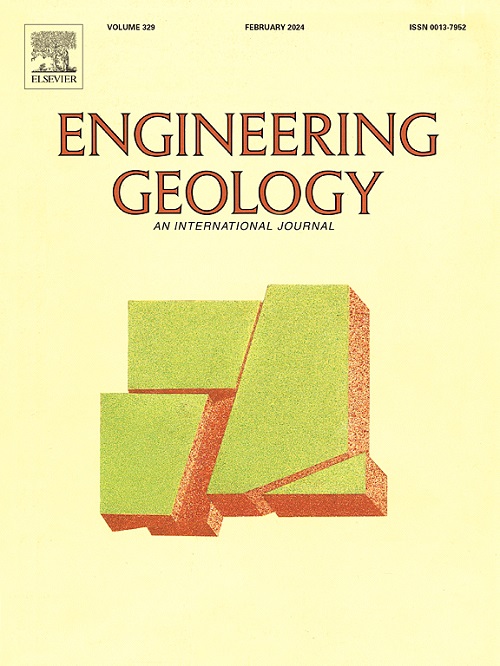Effects of trench drain systems on pore water pressures in slow, deep, clayey landslides: Influence of hydraulic properties of the slip zone
IF 6.9
1区 工程技术
Q1 ENGINEERING, GEOLOGICAL
引用次数: 0
Abstract
Trench drain systems are widely used as remedial measures for slow landslides in saturated fine-grained soils. Among the factors that influence their effectiveness, the hydraulic peculiarities of the slip zone have not been sufficiently investigated. This paper presents the results of numerical analyses of the effects of trench drain systems on clay slope models characterised by very low hydraulic conductivities of the landslide body (kl) and stable formation (kf), with the conductivity of the slip zone (ksz) being several orders of magnitude higher. The hydraulic models reproduced the conditions of a real landslide. Analyses were performed using the code SEEP3D. SEEP/W 2D and PLAXIS 2D were used for comparison. The 3D model shows that, as the ksz/kl ratio increases, the effectiveness of a drain system shallower than the slip surface significantly decreases. As an example, in the case of 12-m-deep trenches, a 25-m-deep slip surface, ksz = kl = 10−9 m/s, and kf = 10−10 m/s, the drains reduce the pore water pressure in the deepest points of the slip zone by approximately 100 kPa. Conversely, if ksz = 10−6 m/s, the pore pressure reduction is only about 10 kPa. Therefore, a drain system designed without considering the hydraulic peculiarities of the slip zone may not be effective. As the trench depth increases, drainage reduces the pore water pressure with a highly non-linear trend, exerting significant effects when the trenches reach the slip surface. Furthermore, 2D models may significantly overestimate the pore water pressure. The differences between the results of 2D and 3D models depend on the trench depth, hydraulic conductivity, and hydraulic boundary conditions.
求助全文
约1分钟内获得全文
求助全文
来源期刊

Engineering Geology
地学-地球科学综合
CiteScore
13.70
自引率
12.20%
发文量
327
审稿时长
5.6 months
期刊介绍:
Engineering Geology, an international interdisciplinary journal, serves as a bridge between earth sciences and engineering, focusing on geological and geotechnical engineering. It welcomes studies with relevance to engineering, environmental concerns, and safety, catering to engineering geologists with backgrounds in geology or civil/mining engineering. Topics include applied geomorphology, structural geology, geophysics, geochemistry, environmental geology, hydrogeology, land use planning, natural hazards, remote sensing, soil and rock mechanics, and applied geotechnical engineering. The journal provides a platform for research at the intersection of geology and engineering disciplines.
 求助内容:
求助内容: 应助结果提醒方式:
应助结果提醒方式:


